In order to celebrate the 90 year Anniversary of Mundelein College, the WLA applied for and received the Illinois History Digital Imaging grant. The IHDI grant is aimed at digitizing documents of historical significance and making them accessible at the Illinois Digital Archives. I have been lucky to be part of a team that is digitizing items from Mundelein College held at the WLA. We’re scanning and describing thousands of publications, photographs, and other items related to the history of Mundelein College so that they are more accessible to the public.[1]
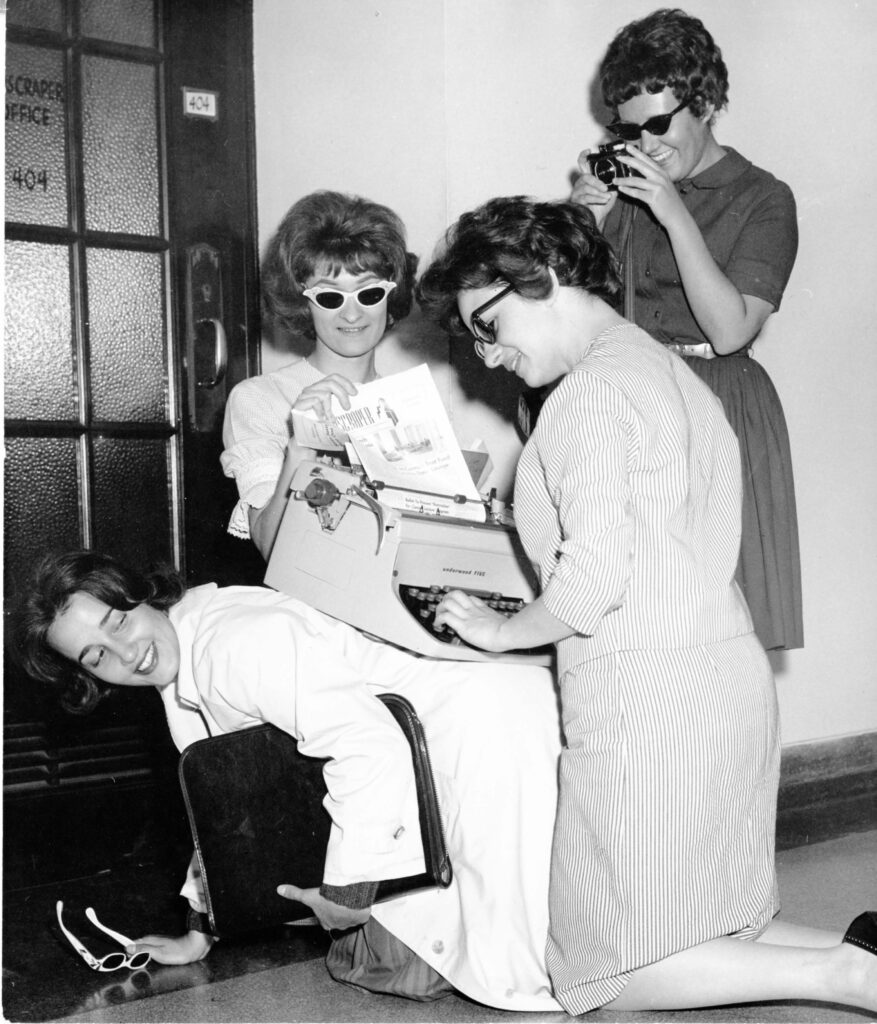
Throughout the digitizing process, I’ve been fascinated by the rigor with which students published journals, newspapers, and pamphlets. Mundelein College students maintained a rich tradition of self-published literature of their sixty-year history. They collected articles and essays, cropped and captioned photos, and folded thousands of pages. The resulting, now digital, volumes demonstrate Mundelein College students’ work and the joy with which they performed it.
We’ve digitized dozens of publications. Here are some of my favorites:

Clepsydra (1932-1938) is a beautifully bound collage of student verse and prose. The name comes from the ancient Greek water clock used to limit the speaking time of Athenian orators. The editors of the Clepsydra wrote that this helped to “make their speeches clear, concise, forceful.” Therefore, it is the clock, they say, that “aided our language to acquire that power and clarity that are its greatest charm.” [3]
Other interesting publications include The Mundelein College Review (1938-1991), an impressive scholarly journal filled with criticism, fiction, and scholarly work. The short-lived political pamphlet Take Issue (1970-1971) illustrates how Mundelein students saw their place in the world. And Mundelein Scholar (1985-1990) was the last student newspaper before the school’s affiliation with Loyola University.
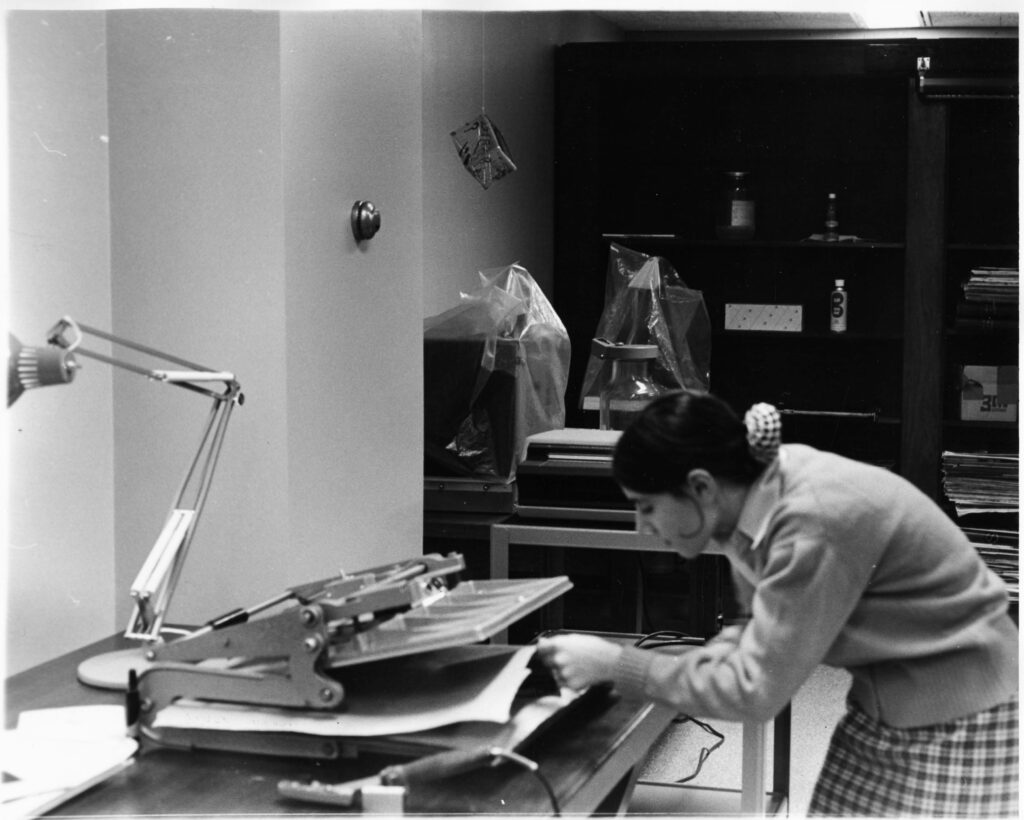
Already digitized and available on the WLA website, The Skyscraper (1931-1969) is one of my favorite time capsules in the Mundelein College collection. It was a newspaper that served as a voice of the students as they react to politics, social movements, and personal experiences during the first half of the college’s history. From the first issue on January 30, students thought of themselves as muckraking journalists “covering assignments,” “rustling news,” and facing “deadlines.” [4]
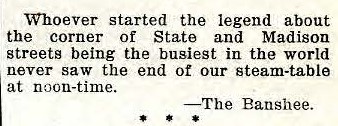
But the Skyscraper was more than serious information. Early editor, Doris Barnett, invented a satirical section to lampoon student life called, “Skyline.” Writers anonymously submitted clever limericks and comical poems, and published under pseudonyms like “O. Kay,” “Peter and Paul,” “The Banshee,” “Nemo” and “Night Owl.”
The photographs we’ve digitized from the WLA’s collection reflect the student-led nature of the publishing process. The editorial boards organized a schedule of articles, photographs, and advertisements. They scheduled articles weeks and months in advance, wrangling students and keeping them to deadlines. Though printing technology changed over the course of the Skyscraper’s history, the editorial grind in 1931 looked much like it does in today’s college newspapers.
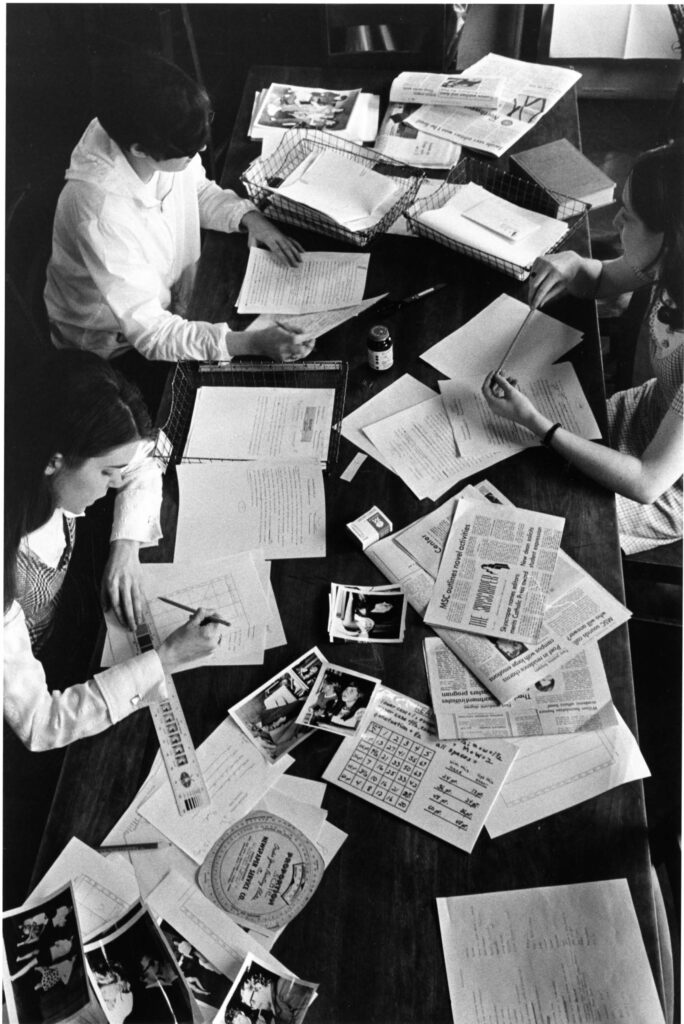
They met with journalists and editors of newspapers to learn about the craft. Mundelein College students benefited from their proximity to Chicago’s many newspapers and from the rich tradition of Catholic presses in the U.S. and around the world. [6]

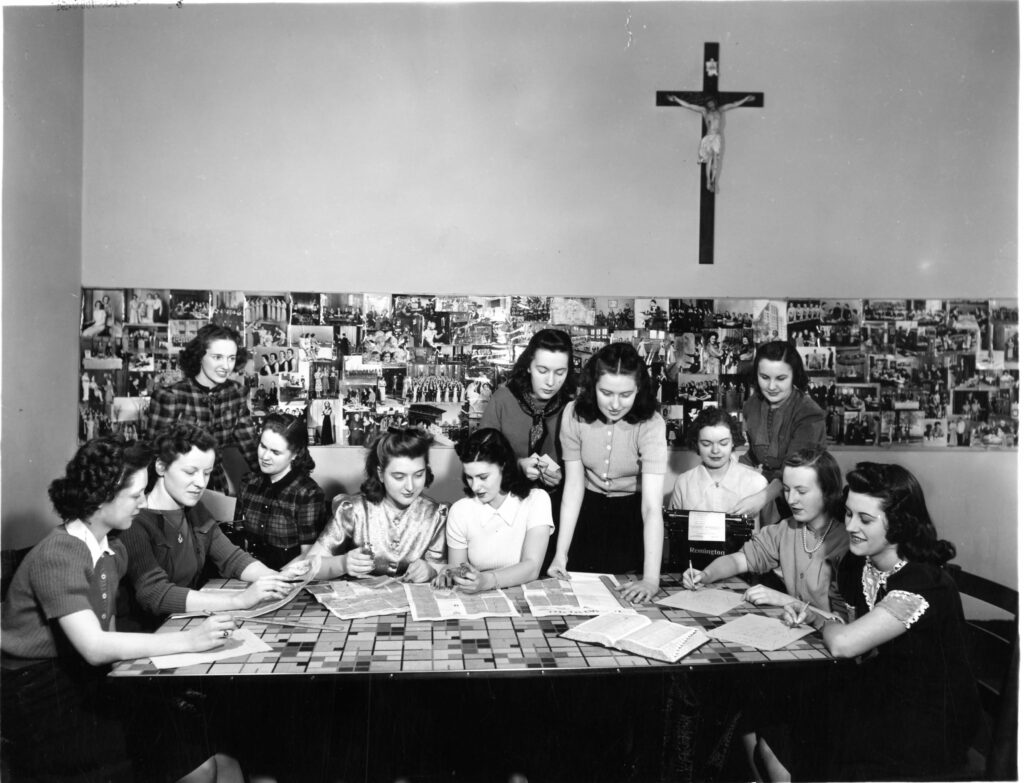
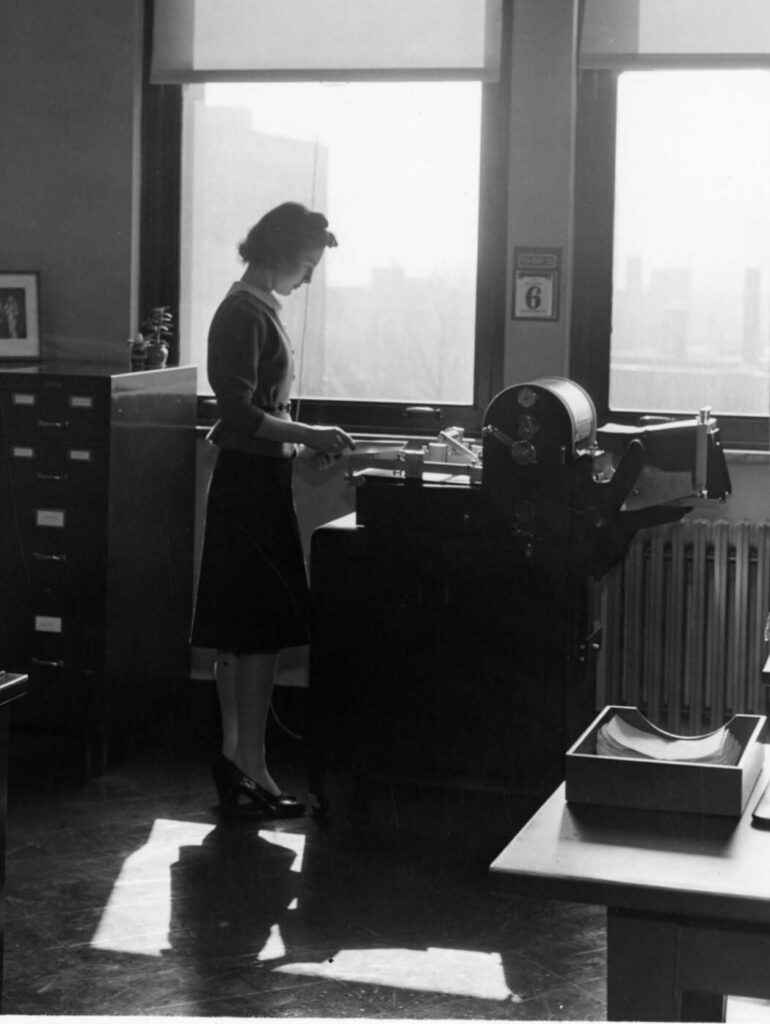
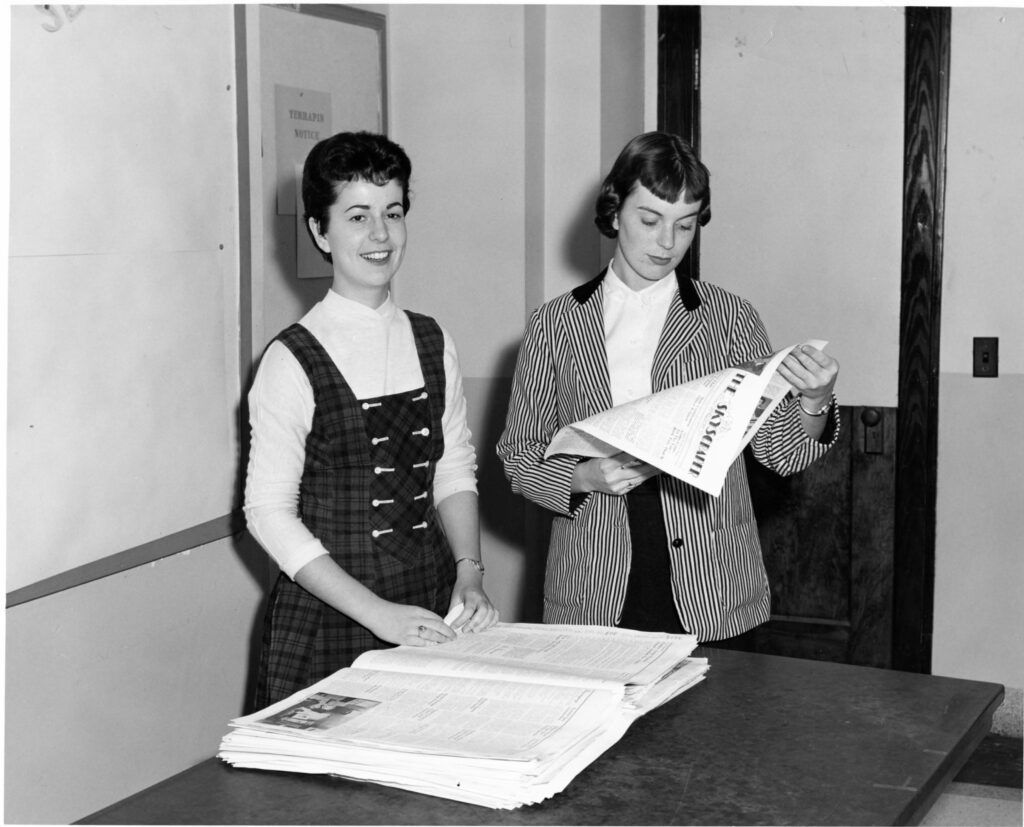
The photos and publications that our team has digitized from Mundelein College’s past contextualize otherwise snapshots found in the already digitized Skyscraper newspaper. For example, the page below is a fascinating time capsule from November 1, 1968. The top article features the Mundelein Marauders, the school’s football team, who played other women’s colleges in the region. These pad-less pigskin pounders provided entertainment for the school’s fans in the oft forgotten sport of women’s tackle football.
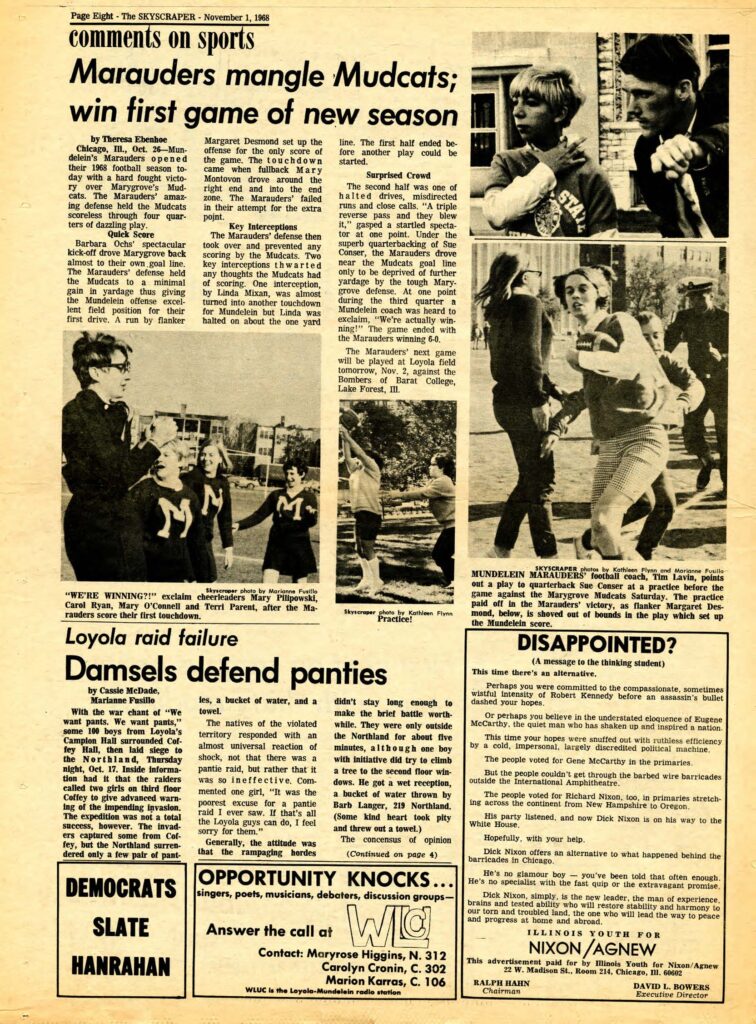
Among our newly digitized photos for the IDHI project is the entire roll of film from the Skyscraper reporter who documented the event.
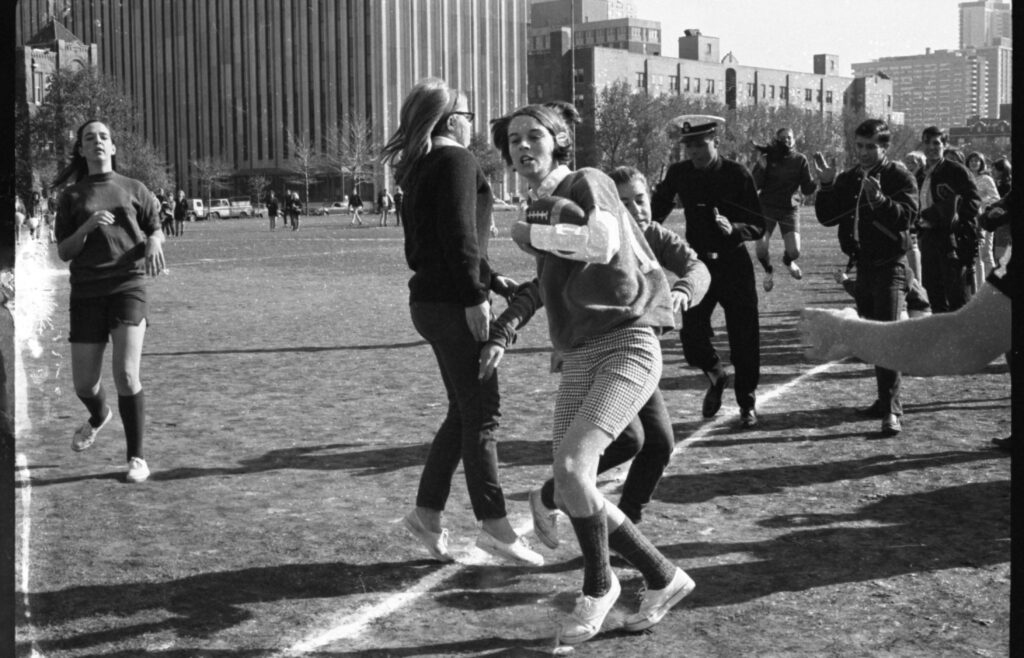

The newly digitized Mundelein College student publications provide a window into college life in the middle of the twentieth century. The Richard Nixon campaign ads and the discontinued collegiate sports stand out as quirky practices of past peoples. But as college newspapers shutter and shrink across the country due to lack of funding, interest, or both, publications like the Skyscraper, Scholar, and Review also remind us of the immeasurable value of the seemingly frivolous elements of liberal arts education. By struggling through the process of publication from planning to printing, Mundelein College students gained life experiences. They were forced to negotiate with tight timelines; they learned the usefulness of levity and comedy; they saw their work come to life on the page. It’s been a pleasure to work with these items, learn how they intersect with each other, and help to make them more accessible to researchers. [8]

Anthony is a US History and Public History PhD student at Loyola University Chicago. His research focuses on the influence of celebrity on politics and identity during the Civil War era. Professionally, he’s interested in interpretation and public programing in museums.
Sources:
[1] https://www.luc.edu/media/lucedu/wla/pdfs/Press%20Release%20April%202022.pdf; https://www.idaillinois.org/
[2] https://luc.access.preservica.com/uncategorized/SO_1ea946f5-6802-4386-845a-df3a9646135c/
[3] (mc_clepsydra_0001_page 113)
[4] https://luc.access.preservica.com/uncategorized/IO_6bec9dc5-ecc7-4ab4-87c4-264131028b1a/
[4] https://luc.access.preservica.com/uncategorized/IO_6d7a9814-fd60-4aa0-84b5-d4ca34986ae4/
[5] https://luc.access.preservica.com/uncategorized/IO_6d7a9814-fd60-4aa0-84b5-d4ca34986ae4/
[6] https://luc.access.preservica.com/uncategorized/IO_17932ea5-c058-4892-80be-bce9bab3462e/ ; https://luc.access.preservica.com/uncategorized/IO_8482c33d-7acd-49be-ade2-a4644f4dc4a8/
[7] Skyscraper 1968-11-01_page 8 https://luc.access.preservica.com/uncategorized/IO_8d3e9730-c001-45a1-8655-a34150060e70/
[8] https://www.theatlantic.com/ideas/archive/2019/08/death-college-newspapers/595849/
Loyola University Chicago’s Women and Leadership Archives Blog is designed to provide a positive environment for the Loyola community to discuss important issues and ideas. Differences of opinion are encouraged. We invite comments in response to posts and ask that you write in a civil and respectful manner. All comments will be screened for tone and content and must include the first and last name of the author and a valid email address. The appearance of comments on the blog does not imply the University’s endorsement or acceptance of views expressed. Questions? Please contact the WLA at wlarchives@LUC.edu.
